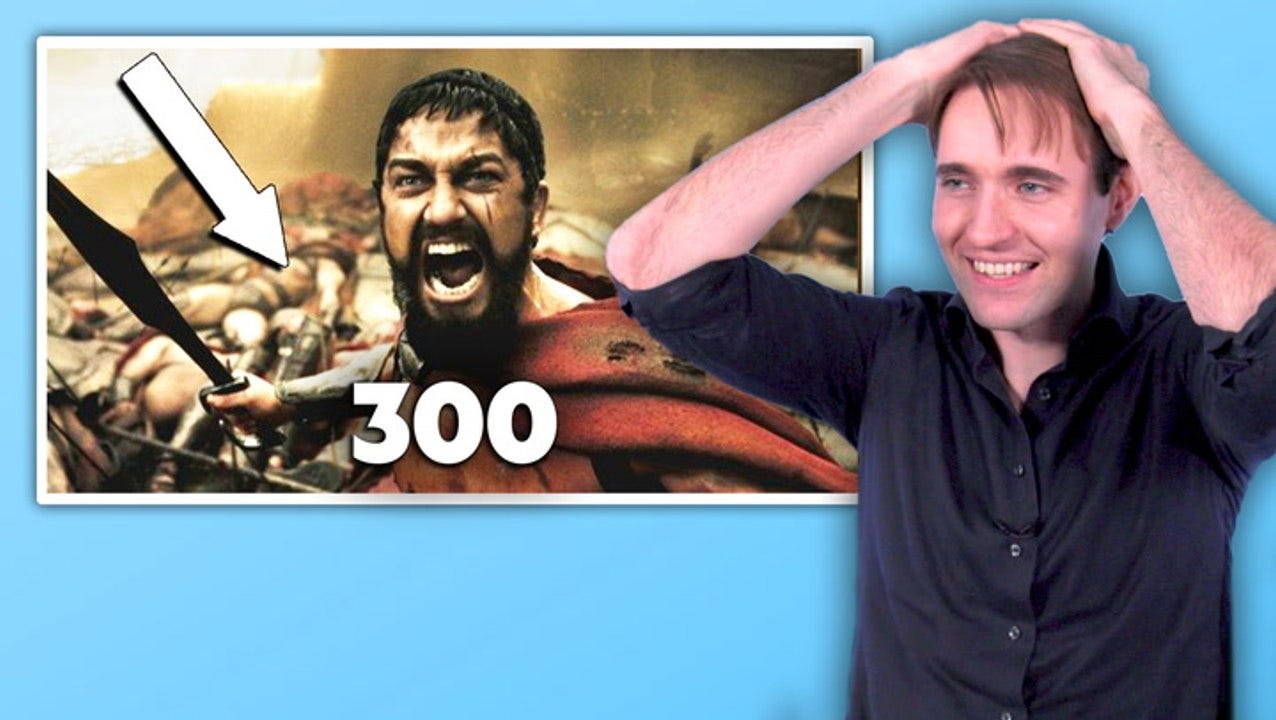Brand Genius, Ad Cynic: What Warren Buffett Should Teach Us About Marketing
What Warren Buffett’s investment philosophy reveals about how advertising really drives business growth and why we keep missing the point.
Where is your ditch, where is your ditch!
Is how I like to imagine Warren Buffett would react to most of the marketing plans, awards entries and commentary across our industry.
Warren Buffett is retiring. After six decades of incredible success steering Berkshire Hathaway through market developments, technological disruption, economic crashes, consultancy fads and a plethora of "this is the year of the..." into one of the most quietly dominant enterprises in modern capitalism, the Sage of Omaha is finally stepping down.
Most marketing plans Buffett would have seen in his career he’d walk away from. Because they’re built for short-term validation, not long-term value. This isn’t a Buffett tribute. It’s a marketing intervention.
If the purpose of marketing is to drive long-term, profitable growth, then Buffett was arguably one of its greatest exponents. He just didn’t call it that.
Its a interesting contradiction to consider, Buffett didn’t like advertising. He famously didn’t trust it. Not the slick kind with manifestos and mood boards, anyway. Especially not the kind that whispered 'brand purpose' while draining shareholder value with a knowing wink.
Buffett famously quipped that when a company starts talking about branding, he starts reaching for his wallet, to get out, not buy in. In another moment of candour, he mocked business fads as “repackaged nonsense” and advised investors to avoid any business that relied on “vision statements over verifiable value”. And yet... some of his most iconic investments; Coca-Cola, See’s Candies, GEICO, Apple are case studies in brand strength, pricing power, and mental availability
However a component that he did build his empire on is something advertising should understand better than it does: the humble ditch.
A guilty pleasure of mine is to hide in my office and watch Business Insider's 'How Real Is It?' videos; my favourites are the ones where historian Roel Konijnendijk reviews how ancient warfare is depicted in TV and film. His most consistent and joyful frustration? That characters are completely oblivious to ditches.
Which is deeply stupid. Because in ancient warfare, ditches weren’t decorative they were decisive. They disrupted cavalry charges, funnelled (whilst marketing funnels are a complete fabrication and are not real, this is a example of a real life funnel) attackers, and bought time and advantage before a single sword was drawn. While Hollywood is obsessed with flaming arrows and heroic slow-motion swordfights, the real battle was often won by a well-placed trench.
Which brings us back to Buffett. Because if marketing is meant to build a protective trench around your organic sales growth, then he might be the most effective ditch-builder in modern business. He didn’t dress it up. He didn’t need a Cannes case study. But he knew exactly what kept competitors out and customers in.
Buffett may not have liked advertising. But he absolutely believed in what advertising is supposed to do: drive growth, build preference, and create value that compounds over time.
How Brands Build the Moat
Buffett’s core investment philosophy revolved around the idea of a "wide economic moat" a concept he repeated so often it practically became gospel at Berkshire Hathaway. He wanted companies that could fend off competition and maintain pricing power not just now, but for decades. And that’s where marketing comes in not as a nice-to-have, but as the very material from which many of those moats are built. Advertising builds that moat by making the brand easy to choose and hard to forget. Mental availability, emotional salience, habit formation all the quiet, compounding effects of good marketing work like trenches dug over time. They don’t show up overnight. But they keep competitors out and margins in.
If you're writing a brief this week, ask yourself: does this dig the ditch deeper or just throw confetti?
Enduring mental availability. Emotional salience. Pricing power rooted in trust. These aren’t side-effects of advertising. They are the work of marketing done well. Buffett may not have liked how marketers talked about it but he absolutely recognised its commercial effect when he saw it.
He wasn’t interested in what a company had done last quarter. He cared about what it could keep doing for the next 25 years. That meant looking for enduring consumer demand, repeatable sales, and the kind of trust you can’t fake. In other words: he invested in brands.
See’s Candies; a small, regional confectioner wasn’t an obvious moneymaker. But Buffett loved it. Why? Because people didn’t just buy the chocolate. They gifted it. Ritual, recognition, emotion: it had what marketers would now call “brand codes.” Buffett just called it “a good business”
The same logic applies to Coca-Cola. He wasn’t betting on the taste. He was betting on the memory structures. "If you gave me $100 billion and said take away the soft drink leadership of Coca-Cola, I'd give it back to you and say it can't be done" (Buffett, 1993). That’s mental availability at scale. The bottle, the logo, the feeling: a product that needed no introduction and no instruction.
Moats, ditches, brands, they’re all the same thing in disguise. They don’t win umpteen awards, they don't thrill in a case study and don't look spectacular on film. But they do something much more important: they protect pricing power, they compound over time, and they make your competition miserable.
They thrill the boardroom!
Buffett hated gimmicks, but lived the fundamentals
If you strip away the ad-industry fluff, most of good effectiveness practice wouldn’t sound out of place at a Berkshire AGM.
Long-term investment for long-term gain? GEICO’s advertising model is built on that, Buffett praised its decades-long commitment to consistent, memorable advertising and direct distribution. This wasn’t some quirky exception to his no-nonsense view of marketing. GEICO proved that if you advertise with relentless consistency and brutal clarity, the ditch gets deeper every year. Its messaging was simple. Its execution was repetitive. And its impact was undeniable.
Price elasticity driven by trust? Apple, Buffett famously avoided tech until he saw that Apple’s brand loyalty allowed it to defy commodity pricing norms. As he put it, "Apple is not a tech stock. It's a consumer products company with a fantastic brand." They built a deep moat—through product excellence, yes, but also through relentless marketing. Every billboard, every unboxing video, every keynote and ad execution helped deepen the mental ditch around their pricing power. It wasn’t just design. It was discipline.
Avoid short-term performance at the expense of brand health? Pick a shareholder letter, any letter—but notably his 1989 letter where he warned against cutting brand investment to boost short-term profit. As he put it, “Unless you are a liquidator, that kind of approach to buying businesses is foolish.” Buffett was describing what he called ‘cigar-butt investing’—buying something cheap and hoping for one last puff of value. It’s a perfect metaphor for bad advertising too: all puff, no staying power.
Buffett didn’t hate advertising. He hated bad advertising the kind that chases KPIs no one understands, pivots to the latest measurement fad, shifts no product, and quietly burns shareholder cash while quoting Ehrenberg-Bass out of context. And in doing so, he exemplified something all of us should remember: Investors, analysts and yes CFOs like advertising. They value advertising. Because when it works, it drives growth and builds company value. What they abhor is the flippant, sensationalist version; the smoke and mirrors, the ego and awards circuit, the need to spend millions on a new ad every year. that too often creeps into how we present our craft. Sometimes it’s strategic. Too often, it’s theatre. The marketing industry has become addicted to novelty and noise Buffett reminds us what serious, strategic brand-building looks like. He mistrusted waste, obfuscation, and performance theatre. So should we.
No Gimmicks. No Confetti. Just Growth and a Big Ditch
Funny, isn’t it? The man most sceptical of advertising may have spent a lifetime digging the deepest, most effective marketing ditch in corporate history.
Because Buffett's legacy proves what we too often forget: great marketing isn’t about what you say. It’s about what people remember. It’s not flash. It’s memory. It’s trust at scale. Built slowly. Repeated often. Paid for patiently.
He didn’t write manifestos about consistency, distinctiveness, and emotional salience. He just did them quietly, in the same grey suit, eating the same McDonald’s breakfast, compounding belief the way others compound interest.
If we want to rebuild credibility not just with consumers but with CFOs and boards we should stop chasing tactics and start building brands the way Buffett bought them: for the long haul.
There are rules. And there are well-earned exceptions. The best marketers like the best investors know the difference. And they don’t confuse novelty with strategy.
Because marketing is not decoration. It’s business discipline. It creates value, sustainably and at scale. Buffett didn’t need a brand onion to understand that. He just needed a moat. Or, more accurately, a ditch.







